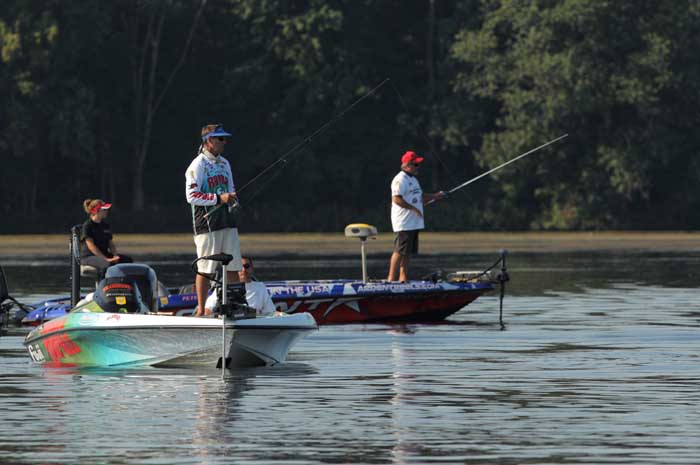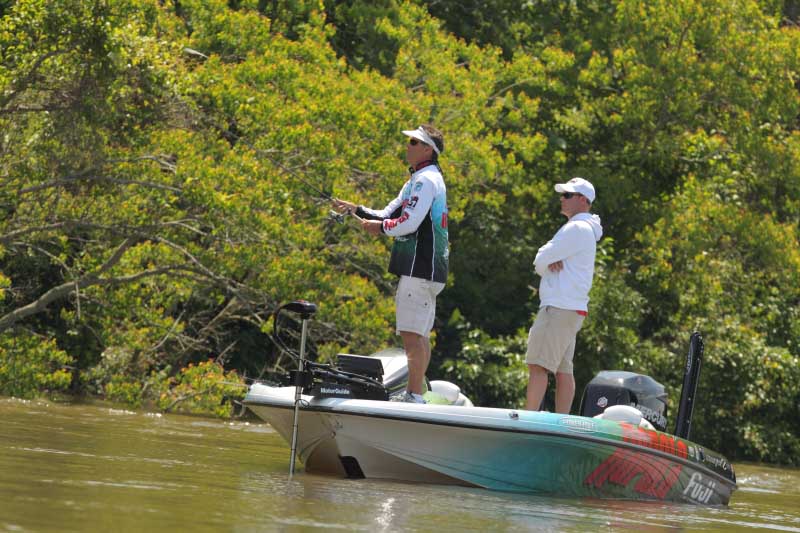
Ever have a great pattern evaporate on you — one so rock-solid you thought there was no way it could fail? It happens to all of us. We find fish — easy fish — and for inexplicable reasons, the pattern somehow falls apart.
Whether you’re a weekend warrior or touring pro, when you pattern fish of the right size — especially in a concentration — confidence soars. So much so, you’re willing to stake your entire game plan on it.
That’s especially true this time of year, when conditions become stable and the fish commit to the shallows. Finding the right area can mean a bite every cast. When it comes tournament time, however, it’s uncanny how quickly things can change. Your pattern, along with the fish, seems to disappear.
That, my friends, is tournament fishing … a game where nothing is given.
Don’t Punt! Modify!
So when it happens, what should you do? Should you abandon the area or, perhaps, give up entirely? Of course not! It’s situations like these that can make you a better angler … as long as you accept the challenge. All that’s required is an open mind and some persistence, and there’s a strong possibility you can salvage something good from the situation.
The first tendency is to believe the fish have left, but chances are they haven’t gone anywhere. More than likely they’re right where you found them … just not biting.
Rather than run haphazardly all over the lake looking for new fish, the smart move may be to experiment right where you started … first by changing lures, then your presentation.
Believe me, in most cases it’s much easier to modify an approach on the fish you’ve already located than it is to find news ones, especially within the time constraints of competition. And it’s likely the bite’s not going to be any better elsewhere either, so forget that — at least for now — and try to figure out how to catch the fish you’ve already found.

Let’s say you found them by burning a spinnerbait down the bank and most of your bites came off isolated targets, like stumps or flooded brush. Rather than abandoning the pattern completely, try backing off and using a slower presentation. The bass may very well be relating to the same cover, just not aggressive enough to bite the spinnerbait. That’s when a slower presentation with some type of soft-plastic might work.
Often, the key is putting some space between you and the target, and then slowing way down. The tougher the bite, the slower I try to fish. And that may involve dead-sticking a Senko or some type of whacky-rig worm.
The point is; exhaust all possibilities before abandoning the targets on which you found the fish initially.
The reason they quit biting may be due to a change in temperature, water color or simply from excessive angling pressure. Whatever the reason, chances are good they’re still there, just not in the mood to cooperate.
Hide and Seek
Let’s say you’ve done all you can to salvage a pattern but nothing is working. What next? The answer will depend on a number of variables, the most important of which is the type of cover you’re dealing with.
When vegetation is involved, the fish may have relocated to another part of the grassbed (such as the deeper edge) or buried themselves in the densest part. The point is they don’t usually travel far. And once you relocate them, they can be caught.
If docks are your primary pattern and you’ve found fish relating to the catwalks (a prime springtime pattern) and suddenly those are no longer producing, it’s likely they moved a bit deeper or to a thicker part of the cover … or perhaps to a nearby brushpile. I guarantee they haven’t gone far.

Dock patterns are usually very reliable, so don’t give up on them. Simply modify your approach by changing lures and targeting another depth. That will usually put you back in contact with the fish.
The same goes for laydowns. You may have found the fish relating to the shallowest portion of the tree, but due to falling water levels or a change in clarity, they’re no longer there. Don’t give up on the pattern. Instead, try dissecting the cover from a distance, working the perimeter branches first, from the deepest part of the tree back toward the shallows. It’s usually a certain depth or some key feature within the cover that they’ll move to. Find it and they will usually bite if your presentation is methodical and stealthy.
Mix It Up
Oftentimes a simple lure change (or even a color change) can heat things up. Only before you’ve exhausted your options should you abandon a pattern or area and look for new fish — especially this time of year.
When a population of bass moves onto a particular flat or shoreline, they’ll usually remain there throughout the spawning cycle. It takes a drastic change in conditions or, perhaps, extreme angling pressure to run them off. This is particularly true of male bass. And where you find the males, the larger females are usually close behind.





